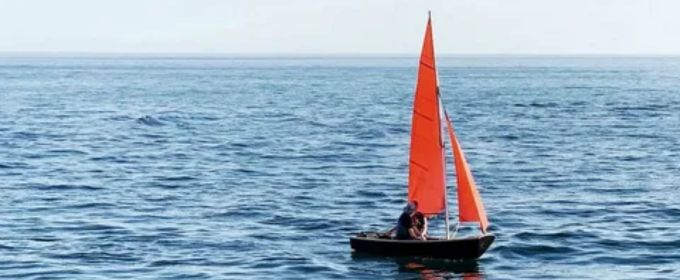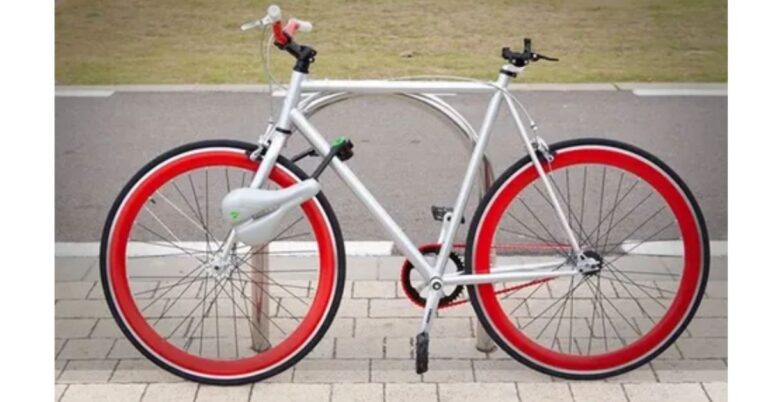The Best Small Sailboat For Beginners. 8 Great Boat Options
Sailing brings to mind sunny horizons, gentle waves, and the excitement of catching the wind. For many new sailors, the journey starts with one question: what is the best small sailboat for beginners? With so many options, it can be confusing, but don’t worry! In this article, we will look at eight great boat choices for those just starting out.
Sail on calm lakes or explore coastal waters, picking the right small sailboat is key to building your confidence and skills. Each boat we discuss has features that are safe and easy for new sailors to handle. So, let’s set sail and find the small sailboats that will ignite your passion for sailing!

What makes a sailboat good for beginners?
A stable boat boosts your confidence on the water. Best small sailboat for beginners with a wider beam are easier to balance and provide more space, making learning less scary. Features like cam cleats for sail adjustments and easy controls make sailing simpler for beginners. This helps them focus on learning rather than struggling with complicated gear.
Another important factor is the sail area compared to the boat’s weight, known as the power-to-weight ratio. Beginner sailboats should have enough sail area for fun in light winds, but not so much that it feels overwhelming. Boats with roller furling jibs are great for beginners because they allow easy control of sail size, helping new sailors gain experience without feeling overpowered.
Easy to sail
Sailing a simple sailboat is attractive because it’s easy to manage and gives quick rewards to beginners. A good beginner sailboat has a straightforward rigging system and clear instructions, helping new sailors learn the basics easily. These boats are light and stable, allowing beginners to focus on learning techniques like tacking and gybing without worrying about complicated gear.
Easy-to-sail boats also have simple controls for adjusting sails, which boosts confidence for first-time sailors. The joy of sailing smoothly on the water with wind power is unique; it turns fear into excitement. As sailors improve, they develop skills and a deeper appreciation for the wind and waves.
Easy to rig
When picking a beginner sailboat, easy rigging is key for a better learning experience. Simple rigging allows new sailors to spend less time preparing and feel less stressed while sailing. Boats with fewer lines and easy setups help beginners focus on learning, making each trip more enjoyable. A straightforward rigging system encourages practice, which is crucial for skill improvement.
When new sailors can quickly get their boat ready, they are more likely to sail often and build confidence faster. Modern features like quick-release hardware and color-coded lines make this process easier, giving beginners a sense of achievement right away. This simplicity improves learning and makes sailing more fun.
Small size
Choosing the right small sailboat is crucial for beginners to enjoy sailing. Smaller boats are easier to control, allowing new sailors to practice without stress. Their compact design helps beginners learn important skills like tacking and jibing comfortably.
Small sailboats are also user-friendly. They require less wind to sail and can be launched from smaller ramps or beaches, making it easier to get started. This allows beginners to enjoy sailing without the difficulties of larger boats.
Maintaining a small boat is simpler and cheaper. With fewer sails to manage and lower storage costs, new sailors can focus on improving their skills instead of worrying about maintenance. Starting with a small sailboat leads to many adventures and builds confidence with each trip.
Dinghy vs keelboat
When beginners choose a sailboat, they can pick between a dinghy and a keelboat based on what they want to achieve. Dinghies are small and easy to manage, making them fun for new sailors. Their simple design helps beginners feel the wind and learn to balance and adjust sails quickly. Without complicated setups or heavy weights, new sailors can focus on their instincts, which is important for learning the basics.
Keelboats provide more stability, making them more comfortable for beginners. They have larger cabins and more storage, which is useful for longer trips or socializing. Although it may take longer for beginners to learn to handle these bigger boats because of their weight and deeper keels, this challenge encourages teamwork. Crew members must communicate well while adjusting sails in different wind conditions.
Minimal sail controls
Minimalist sail controls embrace the beauty of simplicity, transforming sailing into a more instinctual experience. Imagine being out on the water with just a halyard to raise your mainsail and a sheet to trim it. This pared-down approach doesn’t merely lighten your load; it fosters a deeper connection with the wind and waves. The absence of complex systems invites sailors to rely on their intuition, encouraging them to truly engage with each gust that fills their sails.
1 or 2 sails
Sailing with one or two sails can change your experience on the water. Instead of dealing with complicated rigging, you can enjoy a peaceful journey. Imagine gliding along the coast, feeling the wind as a single mainsail catches the breeze and moves your boat forward. You become a watcher of nature, learning how the wind and water interact. Using fewer sails creates a closer connection between you and your boat. With fewer controls to manage, you can focus on enjoying the ride.
Every small shift in your body helps you adjust your path while embracing spontaneity. This isn’t just about making things simpler; it’s about increasing your joy. Reducing excess helps you reconnect with the true essence of sailing: freedom, exploration, and harmony with nature. The sea becomes not just a place to navigate, but an exciting partner inviting you to explore. Each journey becomes a memorable adventure defined by simplicity and wonder.
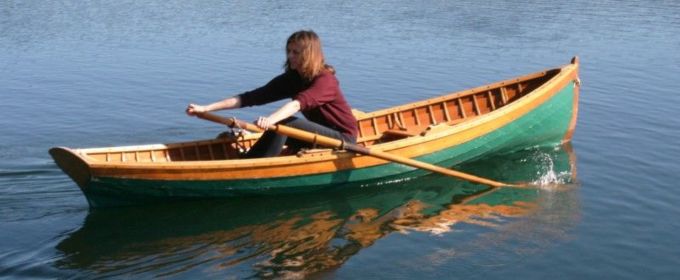
Tiller steering
Tiller steering connects the sailor closely to the boat. It provides direct feedback, making sailing fun and educational. Unlike a wheel, the tiller requires constant attention; you can feel small changes in weight or wind in your hands. This helps you quickly notice when the boat is unbalanced.
For new sailors, this awareness turns every turn into a learning opportunity. Adjusting body position, trimming sails, and correcting the course become easy actions. The tiller’s simple design avoids the complexities of advanced steering systems. With fewer parts and a clear view of the rudder, beginners can grasp basic sailing concepts easily.
As they learn to anticipate wind shifts and manage sail tension, they build a stronger bond with their boat and gain confidence on the water.
Trailerable boats vs marinas
The debate between trailerable boats and marina ownership shows the benefits of each option. Trailerable boats give you freedom to explore different waterways without being stuck in one place. This flexibility allows for spontaneous weekend trips or longer adventures, with new locations just a launch ramp away. You can also find hidden spots like small lakes and quiet rivers that marinas might not access.
Marinas offer a sense of community that trailerable boat owners may miss. Having a slip at a marina gives you easy access to services like maintenance, fuel, and social events with other boaters. The friendships made at marinas can enhance your boating experience and create a lifestyle filled with shared adventures.
Choosing between trailerable boats and marinas reflects your personal boating style, whether you prefer mobility or community.
Commonly available and easy to get parts
When searching Craigslist for a cheap boat, you’ll often find many old 15-foot sloop rigs. These may look outdated, but with some creativity, you can turn them into great boats. Many parts for these boats are easy to find and affordable. Local marine supply stores and online shops offer everything from rigging parts to safety gear.
Using these readily available materials makes upgrading and maintaining your boat practical and rewarding. Even if you’re new to sailing, working on maintenance gives you valuable hands-on experience.
Keep it inexpensive
When buying your first boat, focus on affordability and practicality. A cheaper model can still be good quality. It helps you learn what features you really want without spending too much. Many new boaters get tempted by fancy models and miss important lessons about their needs.
A less expensive boat lets you experiment with different boating styles, like sailing, fishing, or cruising, and try various water conditions. A budget-friendly starter boat is a great way to learn.
Remember, every trip on your first boat is a chance to learn about boating. This experience will help you make better choices when you’re ready to buy your dream boat.
Types of small sailboats
The Minicat Inflatable Catamaran , Tiwal Inflatable Sailboats,Sunfish,Laser,West Wight Potter 15/19,Catalina 25 and Catalina 27,Hobie 16/14 and The 2 person 14 foot sloop rigged sailing dinghy.These boats have small sleeping areas and storage for gear, making them suitable for both day sailing and longer journeys. Beginners can improve their sailing skills while enjoying multi-day trips, which adds excitement to their experience.
Minicat Inflatable Catamaran
The Minicat Inflatable Catamaran changes how we enjoy water adventures, making sailing fun and easy for everyone, no matter their skill level. This lightweight boat is designed for quick setup and easy transport.
What makes the Minicat special is its versatility. You can customize it for different sailing conditions by adding features like a spinnaker or upgrading the sails, which improves performance while keeping it simple. The catamaran’s design offers great buoyancy and stability, providing comfort and speed for an exciting experience without compromising safety.
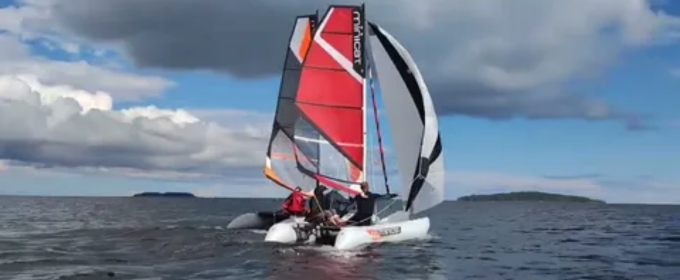
Tiwal Inflatable Sailboats
Tiwal inflatable sailboats have changed the way beginners sail by combining easy transport with great performance. You can easily explore beautiful lakes or coastal waters without worrying about traditional boat transport. Tiwal’s smart design lets you pack the boat into a manageable bag, making it perfect for beginners who want adventure without the hassle of trailers.
Putting the boat together is quick and easy, taking just a few minutes. This gives you more time on the water to learn about wind and sail handling. Tiwal boats are also very responsive, helping new sailors understand how to use the wind effectively. Made from strong materials with sleek designs, these inflatables stay stable and agile even in strong winds.
This helps beginners learn basic sailing skills and gain the confidence to enjoy exciting moments on the water, like catching the perfect gust as you round a buoy!

Sunfish
Sunfish are 14-foot sailboats with a unique lateen rig that attract sailors for their simplicity and versatility. They have a single main sail that catches the wind easily, reflecting a minimalist approach to sailing. These boats are great for both beginners and experienced sailors, allowing them to connect with nature while sailing on calm lakes or rough coastal waters.
Sunfish are made with a lightweight fiberglass hull, making them easy to handle and transport. This feature makes them perfect for spontaneous trips or relaxing days on local ponds. As they glide over the water, Sunfish offer a mix of skillful maneuvering and exciting speed. There’s nothing like feeling the wind in your sails as you head toward the horizon.
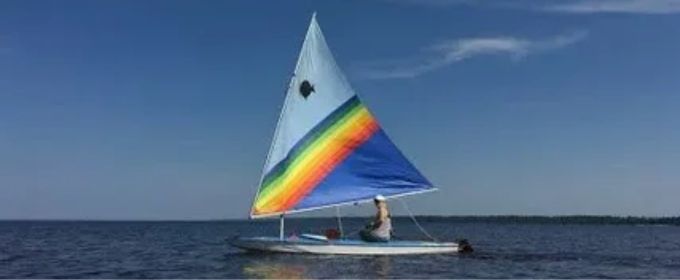
Laser
The Laser sailboat is a 14-foot boat known for its speed and flexibility. It is designed for both solo and duo sailing, offering a simple yet high-performance experience. Its easy rigging system is perfect for beginners and exciting for experienced sailors. The Laser can handle calm waters and strong winds, making it suitable for all skill levels.
What makes the Laser special is its active racing community, which promotes competition and friendship among sailors worldwide. The One Design class rules ensure that all Lasers are nearly identical, emphasizing skill over equipment. This is a refreshing approach in today’s sports world.
For those sailing on lakes or coasts, each race is an opportunity for personal achievement and to connect with fellow adventurers. The Laser is not just about reaching a destination; it’s about enjoying the journey on beautiful waters where nature and passion meet.
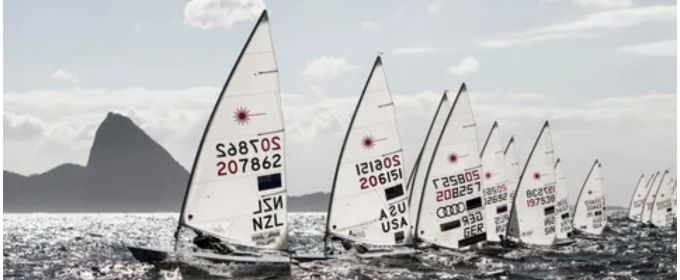
West Wight Potter 15/19
The West Wight Potter 15 and 19 show that size doesn’t always determine sailing ability. The 15-foot model is great for adventurers who want a simple experience. Its lightweight design lets it be towed by almost any car, making it easy to take spontaneous trips to new places. This portability allows sailors to explore spots that larger boats can’t reach.
The West Wight Potter 19 offers more space and stability while being easy to transport. It’s great for families or longer trips, providing comfort for multi-day sailing and easy handling on land. Both models have a strong sail plan, allowing them to perform well in various wind conditions. They are ideal for beginners learning to sail and experienced sailors looking for reliability and charm.
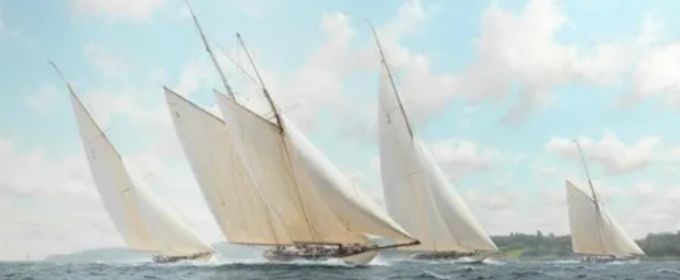
Catalina 25 and Catalina 27
The Catalina 25 and Catalina 27 are popular small cruising keelboats, each with unique features for both experienced sailors and beginners. Their stable hulls and simple rigging make sailing easy and fun.
The Catalina 25 is known for its easy handling and compact size. It has a flexible cabin layout that feels spacious for weekend trips or longer journeys. Its trailerable design allows for easy transport between different bodies of water, making it convenient for those who love adventure.

Hobie 16/14
The Hobie 16 and Hobie 14 are more than just boats; they offer exciting sailing adventures for both experienced sailors and beginners. The Hobie 16 has two hulls and a large trampoline, allowing for fast sailing and a strong connection with nature. Each wave brings a chance for speed as the wind fills the sails, creating a thrilling experience for those who sail on open waters.
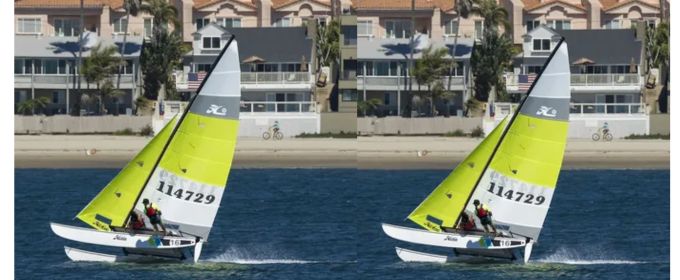
The 2 person 14 foot sloop rigged sailing dinghy
For beginners looking for a small sailboat, the 14-foot sloop rigged sailing dinghy is a great choice. It is stable and agile, making it easy to learn sailing basics like tacking and jibing. Its simple rigging helps newcomers learn hands-on and build confidence on the water.
This dinghy is lightweight, making it easy to transport and launch from almost any location. Its responsiveness to wind changes adds excitement to each outing. With space for two sailors, it’s perfect for practicing and bonding, whether sharing laughs over capsizes or enjoying the thrill of sailing together.
For those ready to start their sailing journey, this 14-foot dinghy offers a chance for endless exploration on calm lakes or coastal waters.
Read Also: 7 Best Ski Helmet Speakers of 2024 Helpful Guide
Frequently Asked Question
What is the easiest small boat to sail?
The Sunfish, Optimist Dinghy, and Laser are often cited as some of the easiest small boats to sail due to their simplicity and responsive handling.
How much does a small sailboat cost?
The average cost of a small sailboat typically ranges from $5,000 to $20,000, depending on the brand, age, and condition.
What is a sloop?
A sloop is a type of sailing vessel characterized by a single mast and a fore-and-aft rig, typically featuring one headsail.
Is it safe to sail at night?
While many sailors do sail at night, safety depends on factors like experience, navigation skills, and weather conditions.
